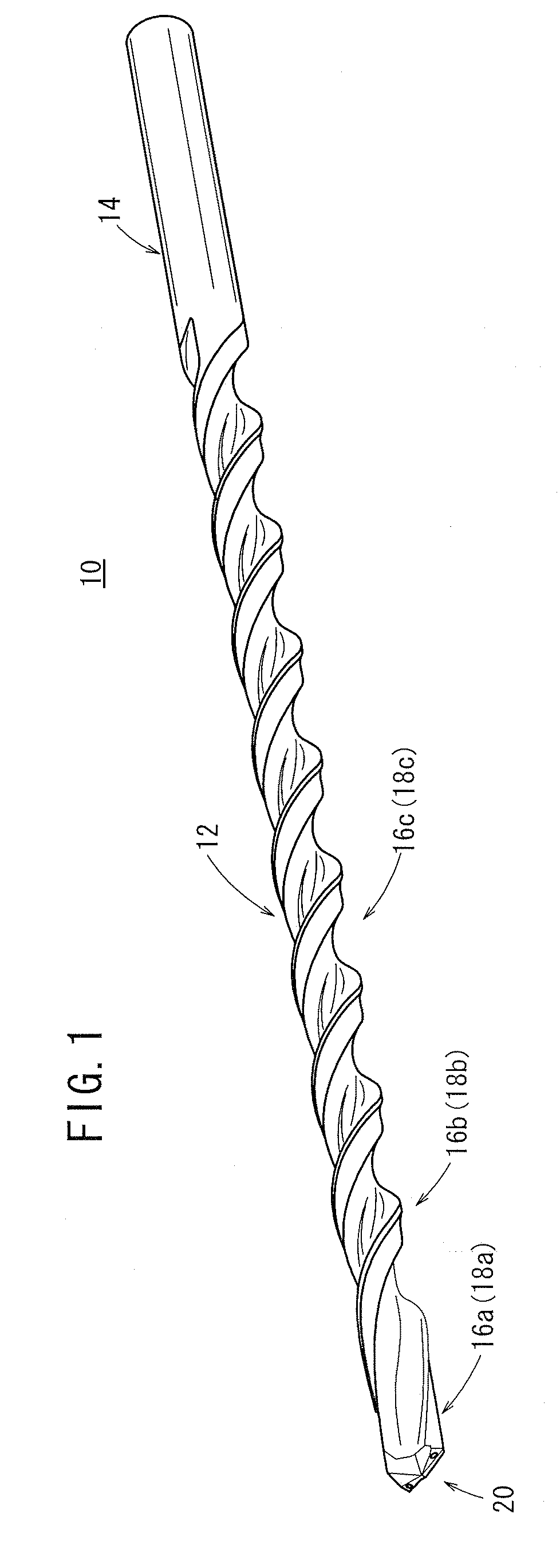Drill
- Summary
- Abstract
- Description
- Claims
- Application Information
AI Technical Summary
Benefits of technology
Problems solved by technology
Method used
Image
Examples
Embodiment Construction
[0035]A preferred embodiment of a drill according to the invention will be described below in detail with reference to the attached drawings.
[0036]FIG. 1 is a perspective view showing a drill 10 according to a first embodiment of the present invention. FIG. 2A is a side elevation of the drill 10 shown in FIG. 1. FIG. 2B is an illustration showing a change in a torsion angle of a blade of the drill 10 shown in FIG. 1. The drill 10 according to the present embodiment is suitable for drilling a deep hole in a metal component (workpiece). The workpiece is, for instance, a cylinder block (aluminum-cast engine component). The deep hole herein refers to a hole having a depth five times or greater than an outer diameter of the drill, and for some cases in which the hole is quite deep, having a depth thirty times or greater than the outer diameter of the drill. Cutting such holes applies a great load on the drill (cutting tool). Incidentally, it should be understood that the drill 10 can als...
PUM
| Property | Measurement | Unit |
|---|---|---|
| Angle | aaaaa | aaaaa |
| Angle | aaaaa | aaaaa |
| Length | aaaaa | aaaaa |
Abstract
Description
Claims
Application Information
 Login to View More
Login to View More - R&D
- Intellectual Property
- Life Sciences
- Materials
- Tech Scout
- Unparalleled Data Quality
- Higher Quality Content
- 60% Fewer Hallucinations
Browse by: Latest US Patents, China's latest patents, Technical Efficacy Thesaurus, Application Domain, Technology Topic, Popular Technical Reports.
© 2025 PatSnap. All rights reserved.Legal|Privacy policy|Modern Slavery Act Transparency Statement|Sitemap|About US| Contact US: help@patsnap.com



